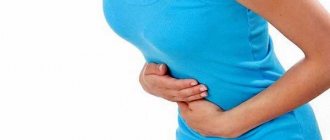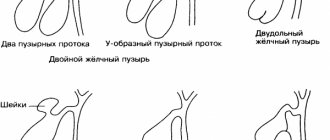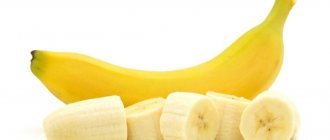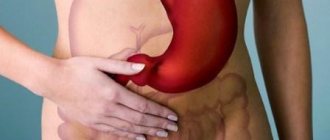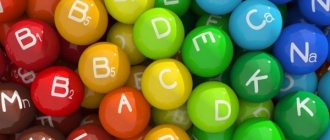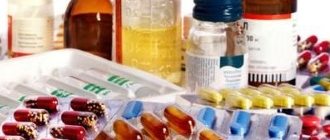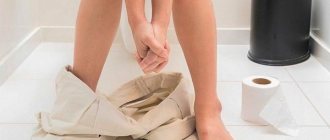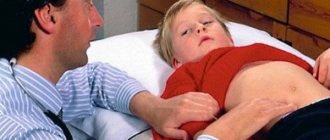Problems with the gallbladder, unfortunately, are familiar to many people from childhood.
Poor nutrition, non-compliance with the daily routine, the influence of unfavorable environmental conditions - all this affects the activity of the digestive system and one of its most vulnerable organs - the bile storage facility located directly under the liver.
Biliary colic can be triggered by various reasons - from excessive fatty foods to cycling.
These painful symptoms almost always force a person to go on a diet and pay attention to such issues as treating the gallbladder with medications. Because traditional treatment requires diligence and duration and is not always effective, but an active person wants to get back “on the job” as soon as possible. Even if it means taking gall bladder pills.
Principles and methods of drug treatment of gallbladder diseases
What diseases of the “collector of bile” can a person develop and how to treat the gallbladder for these pathologies? Today the most common diseases are:
- dyskinesia, or dysfunction, of the biliary organ and biliary tract (BDT) - occurs as a result of the innervation of the organ and, as a consequence, a violation of the contractility of its walls, due to which bile is released into the duodenum untimely or in insufficient quantities;
- cholecystitis is an inflammatory process in the mucous membrane of the bile reservoir, most often caused by infections: Pseudomonas aeruginosa, strepto- or staphylococci, Proteus, E. coli;
- cholelithiasis (GSD) - the occurrence of stones due to a violation of the chemical composition of the contents of the bile sac or an imbalance of the components of bile: bile acids, proteins, minerals, cholesterol;
- cholesterosis is a type of cholelithiasis, when the walls of the bladder thicken due to cholesterol deposits;
- a variety of parasitic infestations from protozoa (Giardia, Echinococcus), affecting liver cells, to large helminths (flukes, roundworms), penetrating the bile ducts and living in the organ.
- all sorts of kinks in the bile sac - as a rule, a hereditary condition in which the anatomical shape of the bladder changes, and the case when drugs for the treatment of the gallbladder will not help;
- tumor diseases - from benign formations (polyps) to malignant (cancerous), which happens much less frequently.
As you might guess, the basic principles of treating the gallbladder with medications are:
- elimination of the cause of the disease (etiotropic therapy);
- restoration of normal organ activity (pathogenetic therapy);
- symptomatic therapy, the purpose of which is pain relief.
Treatment and choice of medications usually depend on the form of pathology affecting the bile-containing organ.
Healthy gallbladder and gallbladder with inflammation
For biliary dyskinesia
Depending on the type of dysfunction (dyskinesia) of the biliary storage organ, complex treatment is usually used, consisting of:
- antispasmodics;
- cholekinetics (drugs to reduce the tone of the gallbladder and increase the tone of the bladder itself);
- choleretics (means to enhance the production and separation of bile);
- substances for performing tubeless tubes (Magnesium sulfate, Sorbitol, Xylitol);
- tonics that correct the functioning of the autonomic nervous system.
To improve digestion, which is often impaired by dyskinesia, enzymatic medications (for example, Mezim) are used.
For cholecystitis
For inflammation (cholecystitis), drugs from the groups of antibiotics, anti-inflammatory and choleretic drugs are usually used to treat the gallbladder.
To relieve characteristic pain under the right rib, antispasmodics can also be used in treatment, and hepatoprotectors can be used to maintain liver function.
For parasitic infestations
Damage to an organ by helminths usually requires appropriate therapy with the parallel use of anti-inflammatory and hepatoprotective drugs.
For cholesterosis, tumors and cholelithiasis
When excess cholesterol is deposited on the walls of the bladder, various tumors and stones, it is useless to use medicines for the gallbladder; these diseases require surgical treatment, and in the case of malignant tumors, also chemotherapy.
Additional measures
Vitamin therapy must be added to the treatment regimen. Take Retinol, ascorbic acid, B vitamins, Tocopherol. Herbal medicine, special mineral water and diet are strongly recommended. In the presence of a benign gastric or duodenal ulcer, Omez, Omeprazole or Ultop are prescribed.
A few months after the period of exacerbation, gastroenterologists recommend undergoing additional treatment - a sanatorium or resort. In the future, such therapy should be annual. This will eliminate the development of complications and other consequences with a severe clinical picture.
The key to recovery will be not only drug therapy, but also proper nutrition and the use of proven folk remedies. This comprehensive approach will help to quickly cope with inflammation of the gallbladder.
Medicines from the group of antispasmodics
To relieve pain in the above pathologies, antispasmodics for the gallbladder are used. The list of these medications is familiar to many:
- Drotaverine is a drug from the pharmaceutical group of myotropic antispasmodics, has a myotropic (muscle relaxant), vasodilator, hypotensive (lowering blood pressure) effect;
- No-spa is a medicine whose active ingredient is drotaverine hydrochloride, which provides the same properties as the previous drug;
- Spazmalgon is a combined pain reliever (analgesic + antispasmodic), active ingredients: metamizole sodium, fenpiverinium bromide, pitofen;
- Noshpalgin is a combined painkiller (opioid analgesic + non-narcotic analgesic + antispasmodic) with active ingredients: codeine, paracetamol, drotaverine.
To effectively treat the bile duct, medications should be taken as prescribed by a doctor and in accordance with the instructions for use of the medication.
Antispasmodics
A group of drugs is used in the fight against cholecystitis to relieve pain. It is necessary to use an antispasmodic drug for hypermotor dyskinesia, a disorder of the biliary system. The main symptom is pain on the right side, bitterness in the mouth, belching.
Direct-acting agents relax the muscles of the bladder and its ducts, as well as the sphincter of Oddi and other structures of the duodenum at any stage. The most effective drugs in this category, which even a child can use (in minimal quantities), are No-Shpa and Papaverine. Used for calculous and acalculous forms of the disease.
Another subgroup of antispasmodics are m-anticholinergics. Atropine and Platiphylline are used in the treatment of the disease. Gastroenterologists recommend using such painkillers with caution, because they can provoke adverse reactions. Doctors point out that it is important to relieve pain in a timely manner - enduring unpleasant sensations is extremely harmful.
Choleretic agents
The most popular drugs that dilute bile in the bladder and help clear the bile ducts most often have several properties in addition to choleretic:
- hepatoprotective;
- antioxidant;
- regenerating;
- antidepressant.
Gallbladder preparations with one or more of the following properties:
- Ursoliv, Ursosan, Exchol, Ursodez, Livodex and other drugs with ursodeoxycholic acid as an active ingredient;
- Heptor, Heptral, Ademethionine with the active ingredient ademetionine;
- Cholenzym is a combined choleretic drug of animal origin, related to bile acid preparations;
- Allochol is a plant-based choleretic medicine for the gallbladder and cystic ducts;
- Gepabene - plant-based capsules (fumewort, milk thistle) with a choleretic effect;
- Holosas is not a tablet for the gallbladder, but a choleretic drug of plant origin in the form of syrup, which makes it possible to use it even in young children.
When starting to use the above medications, you should first consult with your doctor and find out if you have any contraindications to such treatment.
Tablets from the group of hepatoprotectors
Since diseases of the bile-storage organ almost always affect the condition of the bile-producing organ - the liver, it is also useful to take medicines for the gallbladder and liver with a hepatoprotective effect, that is, with the ability to protect and restore liver cells - hepatocytes.
We have already familiarized ourselves with some of these tablets for diseases of the biliary organ, the name of which indicates their composition in the previous paragraphs - these are drugs with ursodeoxycholic acid or with ademetionine.
You can also include drugs with ademetionine as a hepatoprotective substance in the treatment of the gallbladder:
- Heptrazan;
- Heptor;
- Heparetta;
- Adementionine-Vial.
A good therapeutic response from the biliary organ was achieved with drugs for the treatment of the biliary tract with phospholipids:
- Antraliv;
- Essliver;
- Essentiale;
- Phosphogliv;
- Phosphonciale;
- Livolife forte and others.
Also popular in the treatment of the bile reservoir are drugs with the active ingredient ornithine:
- Hepa-Merz;
- Ornithine;
- Ornilatex;
- Larnamin et al.
Some combination herbal medicines also contribute to the restoration of liver cells: LIV-52, Dipana, etc.
Painkillers
When considering how and how to treat the bile organ, it is impossible to ignore such an issue as the use of painkillers. When the bile sac hurts, treatment with antispasmodic drugs is considered the most optimal. The currently known antispasmodics and complex painkillers with analgesic and antispasmodic effects have already been discussed above. You can supplement the list of medications for the gallbladder with a list of such painkillers:
- Paracetamol is an anti-inflammatory drug with a mild analgesic effect, most often used in the treatment of children in the form of syrups;
- Analgin is a non-opioid analgesic with metamizole sodium as an active ingredient;
- Ketanov is a medicine from the NSAID group with a pronounced analgesic effect due to the active component ketorolac.
The use of analgesics, like other medications, should be agreed with a doctor. Relieving pain does not mean eliminating the disease, so if the bile organ hurts, treatment with pills or other medications with an analgesic effect is nothing more than masking the problem.
Antibiotics
Such drugs are prescribed in two cases: for acute and chronic (CR) types of inflammatory reactions. Medicines stop the proliferation of bacteria and other microorganisms by inhibiting their vital functions.
Take antibiotics for chronic cholecystitis for at least one week, less often – up to 10 days. If necessary, re-therapy is carried out, but not earlier than after 10-12 days. Gastroenterologists recommend observing the specified interval, because with antibacterial therapy, both pathogenic microorganisms and good intestinal microflora die. This can lead to dysbiosis and other unpleasant consequences.
Other drugs are prescribed simultaneously with medications. Be sure to use those that restore the intestinal microflora - Linex, Laktovit and their analogues.
Take the following antibacterial agents from the list:
- Ampicillin (third generation). Belongs to the category of penicillins. Available in the form of tablets and injection solutions. The advantage of the antibiotic is the minimum number of contraindications, so it can be used not only for children, but also for women in the second and third trimesters of pregnancy.
- Oxacillin. Another drug related to penicillins. It is used in the form of tablets and injection solution for inflammation of the gallbladder. The product is effective against gram-negative and positive cocci. They can inflame not only the gall bladder, but also the liver and pancreas.
- Rifampicin. We are talking about a semi-synthetic antibiotic, which is characterized by a wide spectrum of action. The medicine is available in the form of capsules. It has a number of contraindications, including jaundice, cholecystitis caused by hepatitis, the use of contraceptives, pregnancy and children under six years of age.
- Lincomycin. It is necessary to consume it to exclude gram-positive bacteria. The drug stops the acute inflammatory process. Available in the form of tablets and solutions for injections. Contraindicated in cases of hypersensitivity, bladder disorders, severe liver or kidney failure.
Erythromycin is used for cholecystitis. Treatment with the drug is effective due to its high activity against dangerous microorganisms - gram-positive. The medication is safe for children and can be used by pregnant women, but at the initial stage of treatment it provokes adverse reactions, such as nausea or belching. Therefore, a medication course should not be carried out without probiotics.
Antibiotic and antiparasitic drugs
As already mentioned, the causes of inflammatory processes in the bile reservoir can be bacterial and helminthic infestations. In such cases, treatment with antibacterial agents (antibiotics) or antiparasitic drugs is necessary. However, it should be recalled once again that medications should be used only as prescribed by a doctor and only based on the results of diagnostic studies.
It is unwise to independently determine the presence of bacteria or worms based on characteristic signs (if someone you know “also had this”). And a mistake in this case can be very expensive, because the incorrect and unlawful use of antibiotics and anthelmintic drugs can lead to unpredictable consequences. Therefore, before treating the gallbladder, medications and the method of their use should be discussed with your doctor.
Medicines for cholecystitis
Treatment under the supervision of doctors can be lengthy and expensive. In addition to taking medications, they are prescribed a diet, physical therapy, and in advanced cases they are sent to the operating table. To avoid ending up in the hospital, you need to choose the right pills for treatment. We have compiled a list of the best medicines for you.
| Tradename | Main active ingredient | Price in Russia |
| Allohol | Dry animal bile | from 15 RUR to 56 RUR (10 tablets) |
| Odeston | Hymecromonum | from 472 RUR to 549 RUR (50 tablets) |
| Tykveol | Pumpkin seed oil (Oleum seminum Cucurbitae) | from 266 RUR to 627 RUR (depending on the number of tablets in the package) |
| Holosas | Rosehip fruit extract (Extractum fructuum Rosae) | from 67 RUR to 114 RUR (syrup) |
| Tanacehol | Tansy flower extract (Extractum florum Tanaceti vulgaris) | from 39 RUR to 58 RUR (30 tablets) |
| Hofitol | Artichoke leaf extract (Extractum foliorum Cynarae scomuli) | from 355 RUR to 370 RUR (solution) |
| Artichoke extract | Artichoke leaf extract (Extractum foliorum Cynarae scomuli) | from 69 RUR to 180 RUR (30 tablets) |
The drugs presented in the table are quite cheap and suitable for adults. They are approved by specialists and can be purchased at a pharmacy or ordered from special medical online stores.
[media=
https://youtu.be/Z9n-__joPbc
]
Allohol
Allochol is an effective choleretic medicine for slowing down fermentation and putrefaction in the liver, prescribed for the treatment of acalculous cholecystitis. Increases secretion of liver secretions. Contains bile, extracts of products such as garlic and nettle, activated carbon. The product is sold at a low price due to its simple composition. Cannot be taken in the following situations:
- ulcer;
- acute form of jaundice;
- calculous form of cholecystitis;
- acute pancreatitis;
- obstructive jaundice;
- liver dystrophy (acute or subacute form);
- hypersensitivity.
It is recommended to take choleretic three times a day after eating, one piece at a time, for a month. During an exacerbation, take one tablet after meals two or three times a day for 1-2 months. The course is prescribed two or three times with an interval of 12 weeks.
Some patients experience an adverse reaction to the drug, expressed by diarrhea and signs of allergies. An overdose is possible, which is expressed by diarrhea, itchy skin, nausea and high concentrations of transaminases in the blood.
Odeston
This is a choleretic medicine that promotes the secretion of bile by the liver. It also has an antispasmodic effect on the ducts. While taking Odeston, bile stops stagnating and crystallizing.
Do not throw away unused medication, as this may harm the environment.
Ask your pharmacist about how to properly dispose of any leftover medication. Odeston can cause diarrhea, flatulence, headaches and allergic reactions. The drug should not be taken in the following cases:
- individual intolerance to drugs;
- renal and liver failure;
- stomach ulcer;
- obstruction of the bile ducts;
- Crohn's disease;
- ulcerative colitis;
- hemophilia.
For two weeks, the drug is taken three times a day, half an hour before meals, one tablet. If you miss one of the tablets, you need to take it as soon as possible, but if you need to take a new dose soon, then you do not need to take the missed tablet. Taking a double dose as compensation is strictly not recommended. Morphine weakens the effect of Odeston.
Tykveol
Tykveol in capsules not only has a choleretic effect, but also affects metabolism. It is a complex drug. This medication has special instructions for comfortable use:
- Cholecystitis can be treated in combination with other medications, and only with Tykveol;
- if side effects occur (allergy, diarrhea), it is recommended to reduce the dose of the drug;
- capsules can be combined with any food product;
- for inflammation of the gastrointestinal tract, it should be taken only in oil form (that is, not in capsules).
There are two ways to take the drug. In the first case, you need to fill a teaspoon with oil from capsules, half an hour before meals, drink one such spoon 3-4 times a day. In the second option, you need to take 4 capsules three times a day during or after meals. Treatment lasts from one to three months.
Holosas
Holosas is a syrup of plant origin, which is used as an auxiliary medication in the treatment of chronic cholecystitis. Has a soft, calming effect on the patient. Does not require exclusion of other medications during use. It is prohibited to use the drug in the following cases:
- individual intolerance to the components of the drug;
- age up to 12 years;
- severe kidney disease;
- thrombophlebitis;
- problems with blood circulation;
- obstruction of the bile drainage pathways;
- pregnancy and breastfeeding;
- be careful with diabetes.
Half an hour before meals, the syrup is taken orally 2-3 times a day. For children 3-6 years old, the dosage is a quarter of a teaspoon, for adolescents under 14 years old - half, from 14 years old they take a whole teaspoon. Side effects include allergic reactions (rash, itching, heartburn and swelling). When taken for too long, patients develop non-infectious jaundice.
Tanacehol
Dancehol is a good herbal choleretic drug (also has an antispasmodic effect). Helps increase the secretion of bile, changes its biochemical composition. Prescribed for chronic inflammation of the gallbladder and other liver diseases. Combined with gastroenterological medications. The composition includes the following substances:
- tanacehol;
- lactose;
- calcium stearate;
- starch;
- aerosil.
A course is prescribed for 3-4 weeks, tablets are taken 3 times a day half an hour before meals. The drug is contraindicated in case of cholelithiasis and individual intolerance to the components.
Cholecystitis develops against the background of cholelithiasis.
A side effect of using Tancehol is an allergic reaction. In case of overdose, the adverse reaction increases. Treatment is to discontinue the medication and relieve the patient of symptoms. Available in pharmacies without a doctor's prescription.
Hofitol
This is a herbal medicine that is part of complex therapy for the treatment of acalculous cholecystitis. One teaspoon of the medicine contains 130 mg of ethanol. It is necessary to be treated with Hofitol with caution in the following cases, and it is better to refuse altogether:
- gallstone disease;
- individual intolerance to the components of the drug;
- acute forms of diseases of the biliary tract, urinary tract, and why the liver;
- obstruction of the bile ducts.
2.5-5 ml of Hofitol is taken before meals three times a day for 2-3 weeks. This is a dosage regimen for adults; taking the solution is contraindicated for children. In this case, tablets are chosen for treatment. The course is repeated as prescribed by the doctor. Side effects include diarrhea and allergies. In case of overdose, these symptoms intensify.
Artichoke extract tablets
Artichoke is a plant native to the Mediterranean. Due to its natural origin, it has a gentle effect on the body and produces natural protection for liver tissue. The extract of this plant promotes secretion and improves the functions of the gland. The drug contains the following substances:
- artichoke leaf extract (the extract contains hydroxycinnamic acids);
- lactose and cellulose;
- carboxymethylcellulose cross-linked sodium salt;
- colloidal silicon oxide (IV);
- calcium stearate;
- stearic acid.
Take the extract twice a day during meals, two tablets. The course lasts at least a month, it is recommended to repeat it after 10 days. The drug may cause side effects such as intestinal pain, diarrhea, allergies and nausea. An overdose results in increased side effects. It is not recommended for treatment of children under 12 years of age with the extract.
